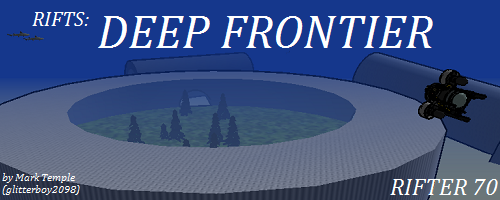Seto wrote:Er... you might want to review the actual art there. While the VF-2SS is outwardly similar to the VF-1, there isn't much commonality otherwise. Its transformation is radically different, its engine configuration and FAST pack setup is a pretty radical departure from the VF-1's norm as well. With greater firepower than the Alpha, greater speed, better MDC in its standard configuration, and so on... it would make the Alpha's existence an uncomfortable step down if the VF-2SS was its predecessor rather than its successor. If one wanted to, it wouldn't be hard to draw a connection between the Valkyrie II's four-engine configuration and the Alpha's...
Performance and design wise these mecha would fit in with the VF-1 service period compared to the Alpha (just as it does against the standard VF-1 of the period). The VFs (aside from the VF-XX) of M2 follow the basic complex transformation of the VF-1, and even strongly resemble it allowing them to be part of the "family" (no unheard of for models to have visible differences). Later Veritech Fighters seem to favor less complex transformations in comparison.
The SAP package is nothing more than an alternate FAST-Pack the UEDF develops in the 2010s, post RoD. Likely optimized for anti-ship duty (BFG, Squires) as opposed to interceptor/dog-fighter (regular) given the different weapon configurations. Basically it is developed to replace the Lancer II and alternative to the Conbat (and other similar units).
The Metal Siren may be the last VF-1 model developed that applied some of the technology that was being developed for the newer generation of Veritechs either to mature the basic technology or migrating to the new model to get some additional life out of the airframe. Basically a VF-1 equivalent of the later Shadow Fighter (plugging in new technology in an existing proven platform) if you follow.
The various railguns mentioned can either be converted to beam weapons, conventional projectile, or remain as is (taking the UEEF RG issue to relate to scale/portability of the weapon in question instead of the technology itself if the last case).
Seto wrote:ut I think that it would be best to boost the Valkyrie II's main body MDC by about 25-30% (bringing it up into the 400s) for compatibility with the RTSC-era mecha...
Basically my view is the more you have to change the RAW presentation of the mecha to fit a given period, the less likely it fits that given period. So TMS would seem the best fit for M2 hardware in question rather than NG/TSC.
The Missile Tables, I will only say that I would use a unified/standardized table.
The jetlasers don't need to be altered given they already come with a limited ROF, so you are trading ROF to get range/damage.
Regarding the gunpods. The BC-60 is comparable to the existing energy gunpods. I would leave the projectile gunpods alone, and attribute the lower damage from the lack of accuracy the weapon has (individual round damage shows a % miss, so nothing out of the ordinary). Basically the UEDF went with less accurate weapon, but one that carried a larger payload (even adjusting for damage between bursts, the M2 gunpods have better payload). Or one could go with TY's favored theory of technology slide.

Seto wrote:I'd also advise that the Super Armed Pack's segments be treated as separate areas instead of boosting the local armor
That is how I take the RAW to begin with. The SAP armor segments include coverage of existing VF-2SS locations, and for simplicity just assume damage goes to them first before the unit proper. Just like the GBP-1S entry in 2E TMS SB.
Rappanui wrote:infact, if the metal siren is so limited, just how the hell did one blow up a Marduk Cruiser with just it's onboard weapons?
Basically the same way Destroids do once on the inside.
I suspect the energy wave is the equivalent to the volley of fire the Destroids unleash during a Deadelus attack in purpose. It may not be useable in regular combat (range, external shielding, etc).

 ) and started to skim it. So far I like what I see and might incorporate it in my Alt project (which has hit a slight bump in regards to how I would change the events of the macros saga
) and started to skim it. So far I like what I see and might incorporate it in my Alt project (which has hit a slight bump in regards to how I would change the events of the macros saga  ). All and all I am taking every ones view of it regarding translation to RT2E. Again this thread is helpful.
). All and all I am taking every ones view of it regarding translation to RT2E. Again this thread is helpful.


